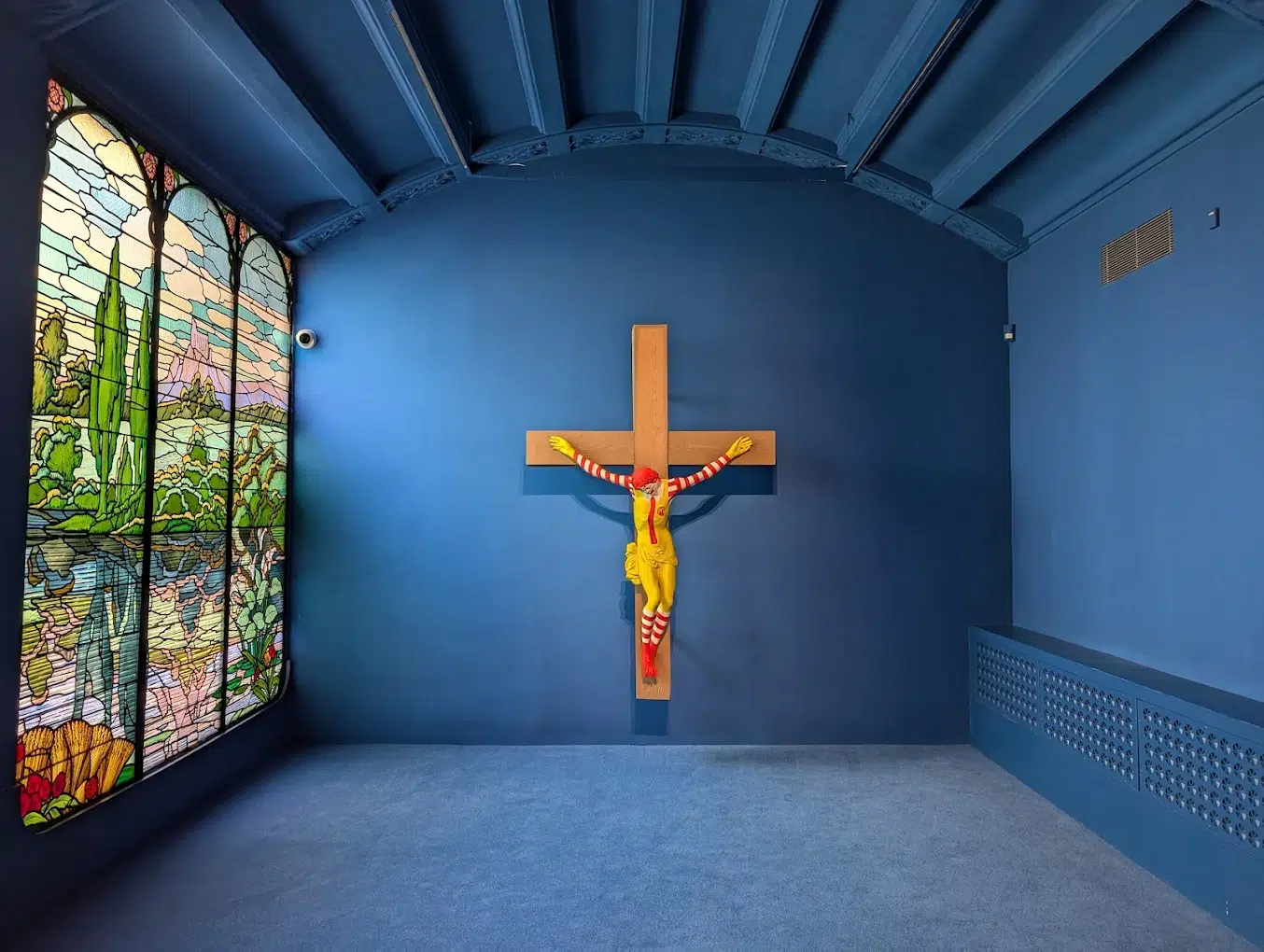As part of the 48H Open House BCN festival, between October 22 and 23, 2022 the Julio Muñoz y Ramonet Foundation will open its doors to the public for the first time. You can visit the building free of charge.
This construction never goes unnoticed. It is distinguished by its beautiful garden (which has always been open to the public), filled with sculptures, trees and ponds full of water lilies.
Now for the festival, the building will be visitable so that you can access the first floor rooms and also get to know the second floor corridor.
What is the Julio Muñoz y Ramonet Foundation building like?
It is a construction of more than 2,100m², an area that is divided into four floors and a rooftop terrace. It has a tower that is luxurious and huge like a palace.
The main façade is inspired by Castilian architecture in its ornamentation. The rest of the facades and the tower have a more classical appearance.
Once inside, you will see a lobby with an imposing staircase that welcomes visitors. The dining room of the house is decorated with paintings by Ramon Stolz Viciano, which are inspired by Homer’s Odyssey.
The paintings dazzle completely in the “Goyaesque room” which is decorated with majas, ladies and chulapos by Ernest Santasusagna and Santacreu.
In addition, the house also has a ballroom, a small chapel, a music room and other equally beautiful and impressive rooms.
The unique garden
The garden of the property has a total area of 3,568 m². It was designed by the landscape designer Nicolas Forestier and is adorned with trees and magical noucentist sculptures by artists such as Josep Dunyach i Sala.
The building of the Julio Muñoz and Ramonet Foundation will be one of the buildings you can visit during the 48H Open House BCN festival. Many of them are usually not open to the public. Therefore, you cannot miss the opportunity to visit this luxurious estate. It will be a unique opportunity for only two days.
Open House volunteer architects will be in charge of guiding you through the interior of the building.
What you should know is that the house looks very different today than it did a century ago.
In fact, the visit will take place almost in the dark because the shutters are closed and awaiting intervention in the coming months. There is no light inside the house.
You will also see the furniture and ornamental and decorative elements covered and in the process of conservation work.
But all this has a very valid reason: it’s all part of the preparation for the building to be open to the public starting next year.




